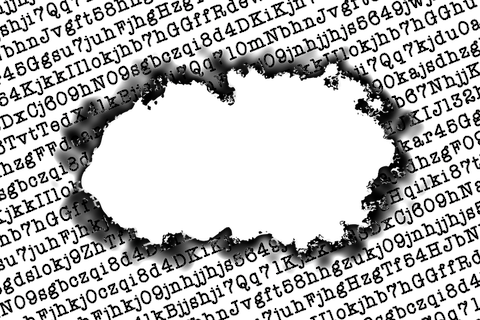Caesar Cipher Decoder
Enter your text below to decrypt or encrypt!
Welcome to our Caesar Cipher Decoder tool! This tool can help you decode messages sent with a simple Caesar Cipher, or encode your messages to send to your friends. Whether you’re a long-time lover of cryptography looking to speed up the encryption process or just learning how to create coded messages, this tool can help you easily and efficiently encode and decode cipher text.
How to Use The Caesar Cipher Decoder Tool
- Type your text in the appropriate box. If you’re trying to decode encrypted text, type the message into the box on the left. On the other hand, if you’d like to encode a message, enter the plaintext you’d like encrypted into the box on the right.
- Choose the shift. In the appropriate box, choose how many steps you’d like to shift each letter. A positive number corresponds to a right shift. For instance, a shift of +1 will change all A’s to B’s, all B’s to C’s, and so on. In contrast, a negative shift will move letters to the left. For instance, a shift of -1 will change all A’s to Z’s, all Z’s to Y’s, etc. If you’re trying to decrypt a message and you don’t know what the shift is, you can check the ‘brute force’ box, which will show you all the possible decryptions of your message.
- Enter a custom alphabet. If you’re working with an alphabet other than the standard English alphabet, enter it in the ‘custom alphabet’ box. Make sure you enter the alphabet in the correct order, or the cipher shift won’t be encoded properly.
How the Cipher Works
One of the oldest and simplest ciphers, the Caesar Cipher is a substitution cipher, which means each letter is shifted a certain number of places down the alphabet. For instance, if you were encrypting the word ‘CIPHER’ with a +3 shift, the letter C would become the letter F; the letter I would become the letter L; and so on for each letter. The final encrypted word would read FLSKHU. This word could then be decrypted by anyone who knew the original encryption method of a +3 Caesar Cipher, who could reverse the cipher by translating all letters back three steps: F to C, L to I, and so on.
Because the Cipher is considered such a basic decrypter in modern times, it can be easy to break. To make it harder to solve, some cryptologists combine the Cipher with other encryption tools.

History of the Caesar Cipher
Developed around 100 BC, the Caesar Cipher is named after Julius Caesar, who used it often during his two-year reign. Caesar mainly applied the cipher to sensitive military messages, mostly commonly using a simple +3 cipher which translated A’s to D’s, B’s to E’s, etc. The cipher allowed Caesar to easily communicate with his military generals, while protecting classified information from low-level messengers or enemies who might intercept them.
Nowadays, the Caesar Cipher is considered too basic to encrypt truly sensitive information, but versions of the cipher are still used for other purposes. For instance, ROT13, or ‘Rotate 13’, is a variation of the Caesar Cipher which is commonly used on internet forums to hide spoilers. This cipher shifts all letters by thirteen spaces, adequately hiding the information from being immediately accessible, but still allowing almost anyone to decipher it if they choose to. In this way, it is almost like a curtain, hiding the information from immediate visibility without truly protecting it.
Other, later versions of the Caesar Cipher are more difficult to break. For instance, some versions of the cipher exist where a code word is used to ‘lock’ some letters of the alphabet in place. The other letters shift around these set points, meaning the code word must be known before the message can be decoded. For instance, ‘EEL’ might be used as the keyword for a +3 Caesar cipher, so that A might shift and become D, but B would shift and become ‘F’, skipping the set letter of E. This complicates the decryption process, but a cipher of this sort can still be relatively easily broken by cryptologists or computers.
Tips for Breaking a Caesar Cipher
Though the Caesar Cipher is simple, it can still take some time to break. There are two basic approaches to breaking it. One is the brute force approach, which requires you to try each possible shift number until you find the solution. This trial and error approach is time consuming, but almost always successful, since there are a limited number of ways to encode a basic Caesar Cipher.
The other way to solve the cipher is to look for the letters which appear most frequently. This is called ‘cryptanalysis’ and can be used for many different types of ciphers. Certain letters appear in English more often than others, including vowels and letters like ‘T’ and ‘N’. You can narrow down the possible cipher shifts based on the prevalence of letters in your cipher. For instance, the most common letter in the English language is ‘E’. If, in your encrypted message, the most common letter is ‘G,’ you might consider that ‘G’ is standing in for ‘E.' This would make the cipher a +2 shift Caesar cipher shift.
For all approaches, you first need to know which language the cipher is in. If you don’t know this, it becomes much more difficult to decrypt the cipher.
Feedback
What do you think about our Caesar Cipher Decoder Tool? Was this tool useful for you, or are there features you’d like to see added? We’d love to hear from you! Reach out using the ‘Contact Us’ page linked below to share your suggestions.